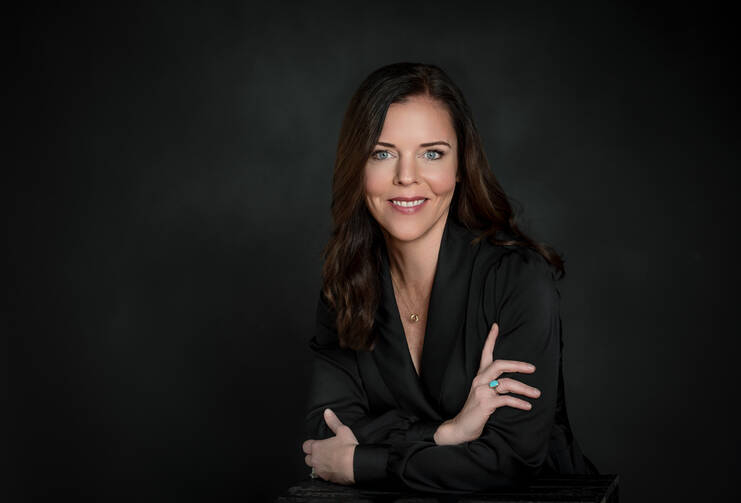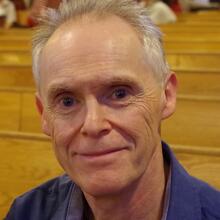A 2009 Christian Science Monitor review by Marjorie Kehe of Mary Beth Keane’s debut novel, The Walking People, said the young novelist “creates characters as believable as they are quietly decent and wise. Never heavy-handed, she allows us to journey with them as they slowly accumulate bits of life knowledge: Whether you stay or leave, everything changes. Even when you find a better place, some around you will still long to be elsewhere.” It was insightful praise for a then-emerging writer who has since staked her claim as a creator of subtle but poignant storytelling.
Following The Walking People, Keane released Fever (2013), a fictional portrayal of “Typhoid Mary” Mallon, the cook born in late-19th-century Ireland whose unwitting dissemination of the typhoid bacteria created havoc in Gilded Age New York. She followed up Fever with Ask Again, Yes (2019), another tale of Irish-born immigrants staking out new lives in New York and its environs. The book furthered Keane’s reputation as an engaging new voice. Early in her writing career, she was awarded a John Simon Guggenheim Fellowship for fiction writing; she has also received citations from the National Book Foundation, PEN America and the Hemingway Society.
Growing up Catholic
In a recent interview with America, Keane shared about the experiences and observations that have influenced her contemporary literary imagination.
Keane attended a Catholic high school in New Jersey, not far from the Irish-expatriate enclave of Pearl River, N.Y., and later attended Barnard College and the University of Virginia, where she earned a master of fine arts degree. Being of Irish heritage, raised Catholic and a woman have played key roles in shaping her worldview. While the expatriate Irish experience is important, so too is the Catholic sensibility that many Irish writers from James Joyce to Pete Hamill could never quite abandon.
For Keane, learning the catechism seemed to provoke a greater sense of questioning and skepticism. “I do think going to Catholic school, learning church doctrine, attending weekly Mass did turn me into a person who questioned things,” Keane said. “I think it helped me become a good critical thinker. ‘Why do we believe this or that?’ I resented the notion of blind faith, the idea that asking questions is a bad thing and not to be encouraged. I also bucked against the idea that our Catholic version of who and what God is was the right one. Why would it be? I resented having to listen quietly to priests and never question anything they said.”
“Unlike nuns, who always seemed to be one of us, priests were sort of held above, and I could never make my peace with that. I remember being quite young when it struck me that Father So-and-So was just a regular person, with all the flaws and foibles regular people have, and didn’t have the ear of God any more than I did. Why do they alone get to make law?”
Keane suggeststhe resentment surrounding “the worship of priests” intensified as she learned more about church history and practices. “The Irish part, or at least what I think of as the Irish part, came in the questioning. I do think there’s something Irish in bucking authority, in saying to myself, ‘F this,’ and walking away. If I want a relationship with God, I don’t need this guy in the middle, navigating. I have a direct line in my heart.”
That same attitude is inherited by some of Keane’s characters. In The Walking People, for example, Keane describes Irish immigrants looking for housing in mid-1950s New York:
Michael told the owner of the building that we are his sisters otherwise he wouldn’t have let us live there with Michael. The man is a German Catholic in the old style and he likes Irish because all Irish are good Catholics. We didn’t tell him how long it’s been since we’ve seen the inside of a church, but Johanna pointed out that seeing the inside of a church has nothing to do with it when you consider how many miserable cranks never miss a Sunday. Take Lucy Sullivan for example how we’ve long said she wouldn’t give a person the steam of her piss but is up there with her tongue out for communion every morning.
Despite her early struggles with Catholicism, Keane grew to appreciate the Sisters of the Sacred Heart of Jesus, who operated her local high school. “They were good Catholics in that they taught us the tenets of the church but also allowed respectful discussion.” Nonetheless, Keane could not escape a growing disenchantment with what might be termed the institutional characteristics of the Catholic Church. The issue came to a head in late 2018, shortly before the release of Ask Again, Yes.
Addressing the scandal
Keane was invited to prepare an essay for Vogue magazine outlining her views on the church in the wake of the scandal caused by abusive priests and the cover-up still reverberating around the universal church. For her, the scandal and the bishops’ poor efforts to take responsibility—and in turn work for atonement and reconciliation with victims—was the last straw.
“I’ve thought back on other dark periods of Catholicism’s 2,000-year history and feel a jolt when I realize the most shameful may be right now, during my lifetime,” Keane wrote in Vogue. “I simply can’t set aside the fact that priests just like the ones at the parishes near my home, men who were held in the highest regard by their communities, were grooming little children, and that their bosses’ bosses’ bosses likely knew it—and, worse, helped them hide it.”
Though her young sons were baptized in the church and had received the sacraments of first Communion and reconciliation, by that point Keane had finally had enough. “It’s simply no longer possible to be a casual Catholic in the way I used to imagine myself,” she added in Vogue. “To be in this church, even in a small way, is to be party to abuse. I can’t solve the church’s problems, obviously. But I can do the one thing within my power: leave and take my children with me. Maybe if more leave, and those pews (and coffers) are finally empty, then the Church will do a more sincere self-examination.”
Portraits of grief and hope
Would she have continued as a semi-committed or casual Catholic if the priestly abuse scandal had never occurred? Probably not, Keane said. There were other church teachings and practices that would have eventually taken their toll.
Despite this attitude, Keane emphasizes that she has friends and family who still go to Mass regularly and who take comfort from their faith. “I’m not trying to convert anyone to my way of thinking,” she said. “When I wrote that article for Vogue, it was partly because no one was talking about it, and if there were Catholics out there who felt like I did, then they should know they’re not alone. And that worked. I heard from so many people from all over the world.”
As for her writing, Keane eschews the belief that novelists must deliver a message in their work. “I know people read and write for a variety of reasons,” she said. “For myself, when I read, I really just want a portrait of something—of grief, of hope, of a particular life, whatever it might be—and I don’t set out hoping to learn anything, nor, when I write, to accomplish anything. I’m not interested in teaching anything, and I don’t read to find lessons.”
She writes, she said, “to describe a feeling that might be so complicated that it’s difficult to sum up into a single word or vision, and so it becomes a story. And in reading that story, in really feeling it in their bones, a reader might feel less alone.”
The novel she is working on now begins in the west of Ireland, then unfolds in Montana and eventually New York City. While based on her own father’s experiences, it will almost certainly feature characters similar to the protagonists from her first four books. “[My father] had his dreams and ambitions, of course, but I don’t think he ever lost track of how lucky he was to have the things a lot of people fail to appreciate—a stable life, food in the fridge, love, healthy children,” Keane said. “At the end of his life, as he was declining, he suddenly voiced a few regrets. I guess my new novel is about that, though I’m still finding it. ‘Why are we here? Why do we mean so much to each other? Why do we carry things in the privacy of our hearts for so long, a whole life?’”
In reviewing Keane’s latest release, The Half Moon, for The New York Times this past April, the author Janice Y. K. Lee noted another distinguishing element of Keane’s four-novel body of work. Keane, she noted, “manages to find the extraordinary grace in our achingly ordinary world.”
Keane’s “achingly ordinary world” is aptly described in the lives and actions of her striving and often contradictory characters. “When I think of characters as they become more fully fleshed out, I like to think most about their contradictions, the differences between what they say and what they actually do, or how they might act against their own best interests, and why—if it’s possible to know why,” Keane says. “I think the most interesting lies are the ones we tell ourselves and I think finding out what that lie might be for each reader is a real driver.”
“So many problems in this world are real, of course, yet I think so many problems I encounter in people are of our own making,” she says. “I’m susceptible to this too, of course, we all are—but when I step back and really think about it and count my many blessings, everything really does look very different.”
Contradiction, uncertainty, wonder and fleeting glimpses of simple good fortune also seem to bubble up in the writer’s creative imagination. “It’s possible that I’m arguing again and again that life is hard, cruel, unfair, but also very beautiful, and [that] we are lucky to be here,” Keane suggested. “I’m not a believer, but that’s something I try to make myself understand. One tiny difference of timing or change and I would not exist. And why do we mean so much to each other when our expiration date comes up awfully fast, compared to the history of the world?”








